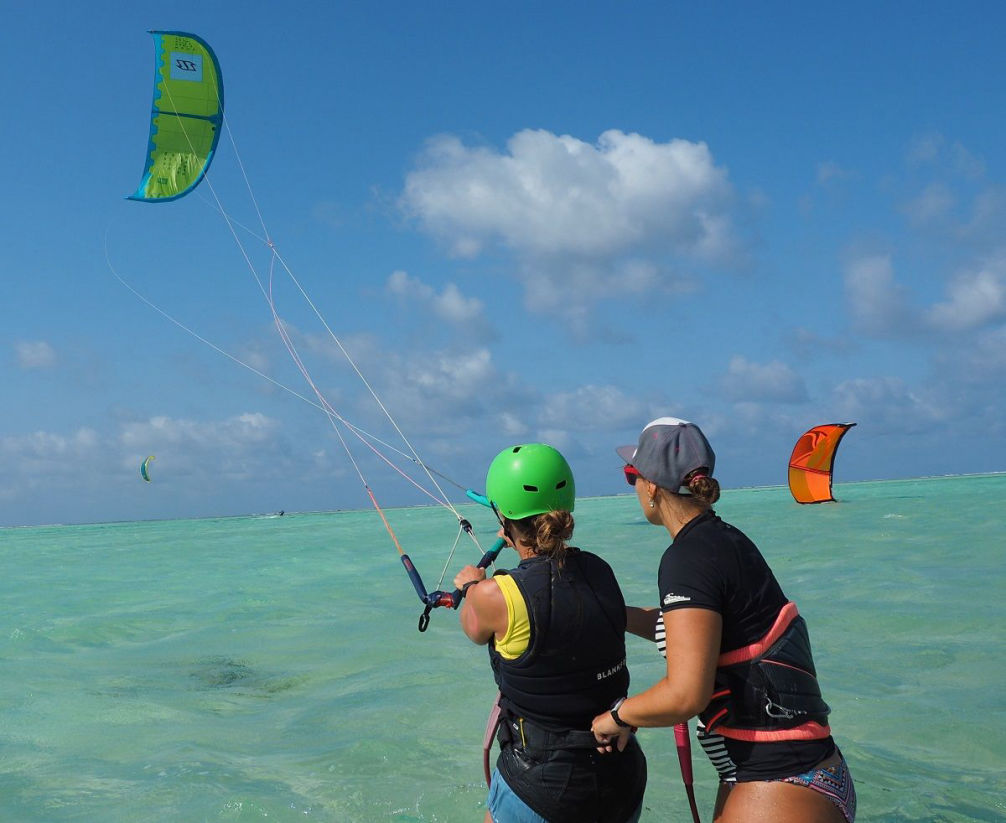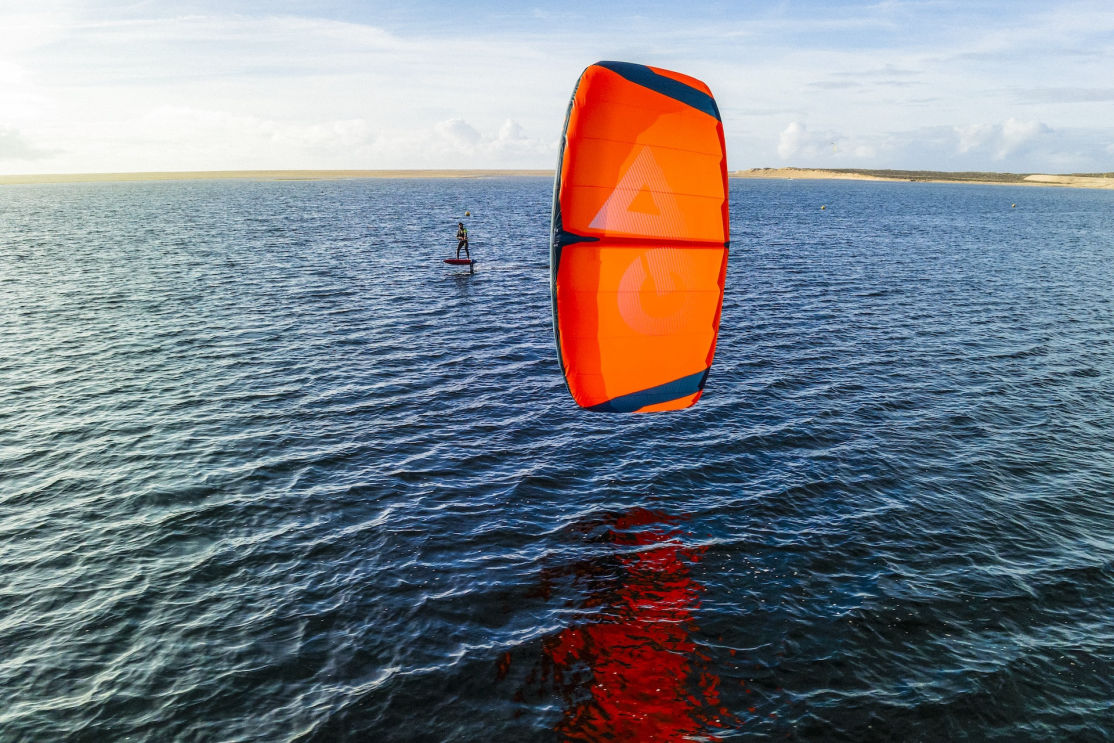
The Ultimate Guide to Kitesurfing Lessons for Beginners
A comprehensive introduction to kitesurfing lessons awaits, revealing essential tips and skills that every beginner should master before hitting the waves.

A comprehensive introduction to kitesurfing lessons awaits, revealing essential tips and skills that every beginner should master before hitting the waves.

If you're considering kitesurfing, you might be wondering where to start and what to expect from your lessons. This guide will walk you through the essentials, from understanding the sport's basics to choosing the right gear and finding a reputable instructor. You'll learn crucial safety tips and what happens during a typical lesson, ensuring you're well-prepared for your first experience on the water. But before you gear up, let's explore the foundational skills that can make all the difference in your kitesurfing journey.
Understanding the basics of kitesurfing can feel overwhelming at first, but it's simpler than you might think. Kitesurfing combines elements of surfing, windsurfing, and paragliding, making it an exhilarating water sport. In kitesurfing, you harness the power of the wind using a large kite while riding a board across the water.
If you're in Adelaide, you're in luck! Kitesurfing lessons are readily available, especially in stunning locations along the coast of South Australia. These lessons introduce you to essential skills like kite control, safety procedures, and riding techniques.
You'll learn how to launch and land the kite, as well as how to navigate the wind.
Wing Foiling Lessons are also gaining popularity and offer a unique twist by using a wing for propulsion. Both kitesurfing and wing foiling provide an incredible way to enjoy the beautiful waters of South Australia.
With experienced instructors guiding you, you'll gain confidence quickly.
RIDE Kitesurfing
1 The Foreshore Opposite Everard Street &, Lady Gowrie Dr
Largs Bay SA 5016
Phone: 0417 858 641
Email: info@ridekitesurfing.com.au
Website: https://ridekitesurfing.com.au/
When it comes to kitesurfing, having the right gear is crucial for your safety and enjoyment on the water.
First, you'll need a suitable kite. For beginners, a larger kite is often recommended, as it provides more lift and easier handling in lighter winds. Look for a kite that's user-friendly and stable.
Next, you'll want a reliable board. A larger board offers more surface area, making it easier to balance and ride. Opt for a twin-tip board, as it allows you to ride in either direction, giving you more versatility.
Don't overlook the importance of a harness. A comfortable and secure harness will help you connect to the kite and distribute the load evenly, reducing strain on your arms and back.
Lastly, invest in protective gear like a helmet and impact vest. These items will safeguard you against falls and impacts, enhancing your confidence as you learn.

Finding the right lesson provider can make all the difference in your kitesurfing journey. Start by researching local schools that offer Kitesurfing Lessons. Look for providers with positive reviews and testimonials from past students. A strong reputation often indicates a commitment to quality instruction and safety.
Next, check the qualifications of the instructors. Ensure they're certified and have experience teaching beginners. An experienced instructor will provide tailored guidance, helping you progress quickly while minimizing risks.
Consider the type of lessons offered. Some schools provide one-on-one sessions, while others may have small group classes. Decide which format suits your learning style best. Additionally, ask about the equipment they use. High-quality, well-maintained gear can significantly enhance your learning experience.
Location matters too. Choose a provider situated in a safe, suitable spot for beginners, ideally with consistent wind conditions.
After you've selected the right lesson provider, you can look forward to an exciting and engaging experience during your kitesurfing lessons. Your instructor will start by introducing you to the basic concepts of kitesurfing, explaining how the kite works, and showing you the necessary equipment.
You'll get hands-on experience right away, practicing kite control on the beach. As you progress, expect to learn how to launch and land the kite safely, which is crucial for your overall experience. Your instructor will guide you through the steps, ensuring you feel comfortable and confident.
You'll also move on to body dragging, where you'll get used to being pulled by the kite while in the water. Throughout your lessons, you'll receive personalized feedback tailored to your learning pace.
The lessons will be a mix of instruction and practice, allowing you to build your skills progressively. You'll also have plenty of opportunities to ask questions and clarify any doubts.
Before you hit the water, it's crucial to brush up on some essential safety tips for beginners. First, always wear a personal flotation device (PFD) to keep you buoyant in case of an emergency. Make sure your kite and equipment are in good condition; inspect for any tears or damages before each session.
Next, familiarize yourself with the local spot and understand any potential hazards like rocks, shallow areas, or strong currents. Always check the weather conditions and wind patterns—never underestimate the power of the wind.
When launching and landing your kite, communicate clearly with your instructor or any nearby riders. Always keep an eye on your surroundings; never kite near swimmers or other watercraft.
Practice self-rescue techniques, so you know how to handle unexpected situations. If you feel uncomfortable or overwhelmed, don't hesitate to ask for help.
Lastly, never kite alone, especially as a beginner; having a buddy can make all the difference in ensuring safety and fun.
You can start kitesurfing lessons as young as 10 years old, but it's really about your comfort and confidence in the water. Age isn't as crucial as having the right mindset and physical readiness.
You can't kitesurf safely if you can't swim. It's crucial to understand water safety and have basic swimming skills. Taking lessons will help build your confidence and ensure you enjoy the experience while staying safe.
Kitesurfing equipment costs vary depending on quality and brand, but you can expect to spend between $1,000 to $3,000 for a complete setup. Investing wisely ensures you'll have a fun, safe experience on the water.
Yes, kitesurfing's definitely weather-dependent. You need suitable wind conditions and safe water. Check forecasts before heading out, ensuring you've got everything you need for a fun and safe experience on the water. Enjoy the ride!
Yes, you should book lessons in advance. It ensures you secure your spot with an experienced instructor and access to necessary equipment. Plus, it helps you plan for your kitesurfing adventure more effectively.